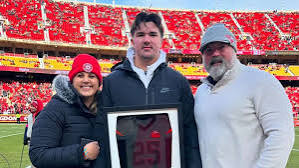Miami invested heavily in its future along the offensive line last week with the commitment of five-star tackle Jackson Cantwell.The Hurricanes and Cantwell, the No. 10 overall prospect in the 2026 recruiting class, negotiated an NIL deal 247Sports previously reported approaches $2 million annually.
Cantwell’s yearly compensation might effectively equal about 10% of Miami’s “salary cap,” raising the question of whether it is feasible to spend that much money on a player who won’t play a snap in college for more than a year as a judgment on the NCAA v. House settlement draws closer.
More than a half-dozen sources within college football were asked by 247Sports what they thought of Miami spending big for Cantwell and whether devoting that much money for one high school offensive tackle is worth it.
“If you can pay it, do it,” said one SEC director of player personnel. “Go get that guy
Once the House settlement is formally adopted, which might happen in a few days, things might not be so clear-cut. Any upcoming NIL transactions exceeding $600 will require clearance from a clearinghouse, which will assess if they satisfy the fair market value requirement.
With revenue sharing—which is anticipated to be between $14 and $16 million for the majority of Power Four football programs—making up the majority of a pseudo salary cap, schools will, at least on paper, have far more spending restrictions.
The same SEC director of player personnel stated, “There’s no f–king way if it’s coming out of the rev share.” That’s either a starting left tackle or a quarterback.
Cantwell is going to start his career and be at best a quality starter. Not very good. Not one of the privileged.
While most of the sources agreed that $2 million per year is excessive for an offensive tackle recruit, others were more open minded.
“Yeah, but you can only have one of them,” said an ACC director of player personnel.
“You have to invest up front, and that’s what the market is around. You gotta be damn sure (they’re the one).”
A Big 12 general manager said that he would much prefer sign three high school offensive linemen for $100,000 apiece when questioned about Cantwell’s price tag.
The likelihood that one will stay and turn out to be a deal increases with the number of darts you toss.
Now Playing
Miami invested heavily in its future along the offensive line last week with the commitment of five-star tackle Jackson Cantwell.
The Hurricanes and Cantwell, the No. 10 overall prospect in the 2026 recruiting class, negotiated an NIL deal 247Sports previously reported approaches $2 million annually.
As a decision on the NCAA v. House settlement nears, Cantwell’s annual figure could essentially amount to roughly 10% of Miami’s “salary cap,” begging the question:
Is it practical to allocate that much money to a player who will not take a snap in college for more than a year.
More than a half-dozen sources within college football were asked by 247Sports what they thought of Miami spending big for Cantwell and whether devoting that much money for one high school offensive tackle is worth it.
It may not be that cut and dried once the House settlement — a decision that could come in a matter of days — is officially approved.
All future NIL deals more than $600 will be subject to approval from a clearinghouse that will determine whether they meet the standard of fair market value. Schools, at least on paper, will be far more limited in their spending with revenue sharing (expected to be $14 to $16 million for most Power Four football programs) making up the majority of a pseudo salary cap.
“If it’s coming out of the rev share, there’s no f–king way,” the same SEC director of player personnel said.
“That’s a quarterback or a starting left tackle. Cantwell is going to start his career and be at best a quality starter. Not a great one. Not an elite one.”
While most of the sources agreed that $2 million per year is excessive for an offensive tackle recruit, others were more open minded.
“Yeah, but you can only have one of them,” said an ACC director of player personnel. “You have to invest up front, and that’s what the market is around. You gotta be damn sure (they’re the one).”
When asked about Cantwell’s price tag, a Big 12 general manager said that he’d much rather sign three high school offensive tackles at $100,000 each. The more darts you throw, the more likely it is one will stick and end up as a bargain.
Others weren’t willing to pay up for any high-profile linemen, arguing quality depth across the board in that room is more important than having a single elite piece and deficiencies elsewhere.
“I don’t find that to be the most effective way to build a roster long term,” an SEC director of scouting said. “But in reality, yes, some teams are going to spend that on a premium position or two each class because either they badly need the position in the short term or maybe they just don’t want to play against them for three-plus years.”
Even a $2 million player is not guaranteed to remain content. Their pay floor is that. Once a high school athlete makes that kind of money, there’s nothing stopping them from returning and requesting more.
That scenario can end in disaster as evidenced by the Nico Iamaleava saga earlier this year.
Because of the uncertainty surrounding Cantwell’s future, Miami’s dedication to him is an intriguing development at a time when college football is about to undergo yet another fundamental shift.

